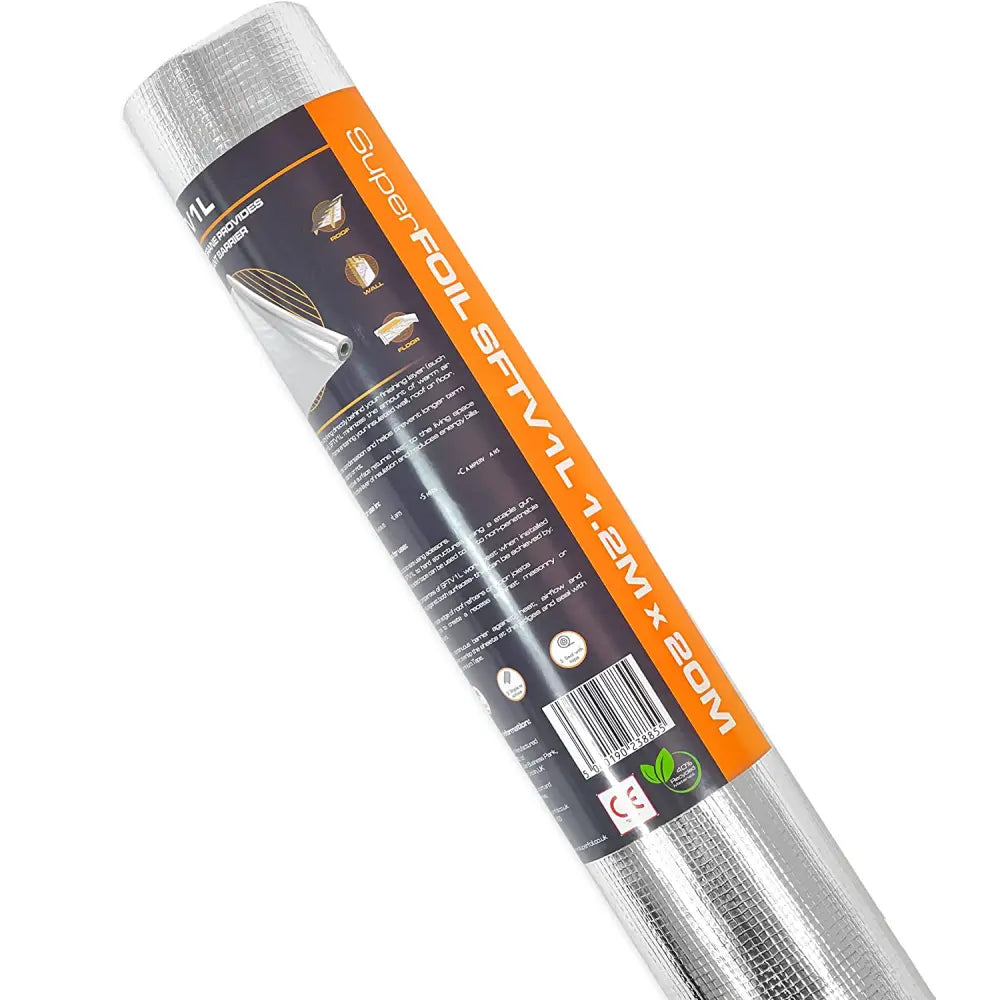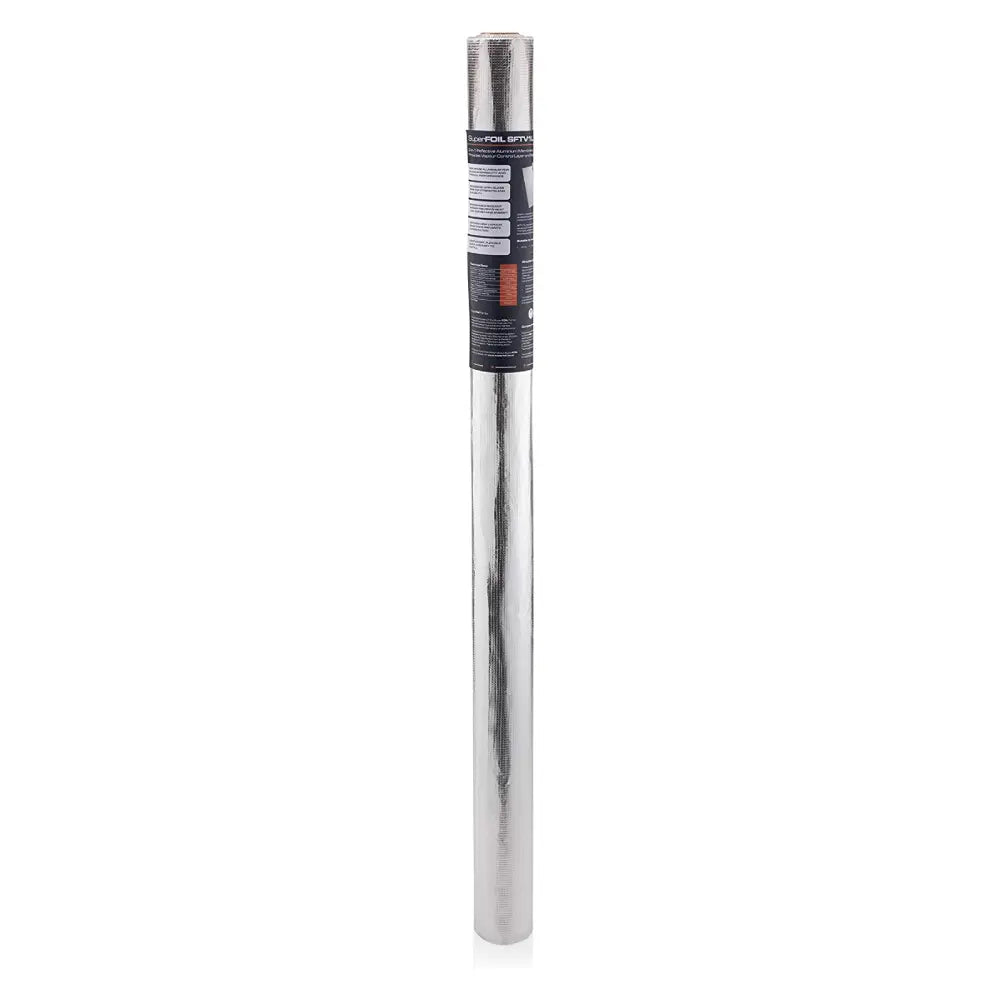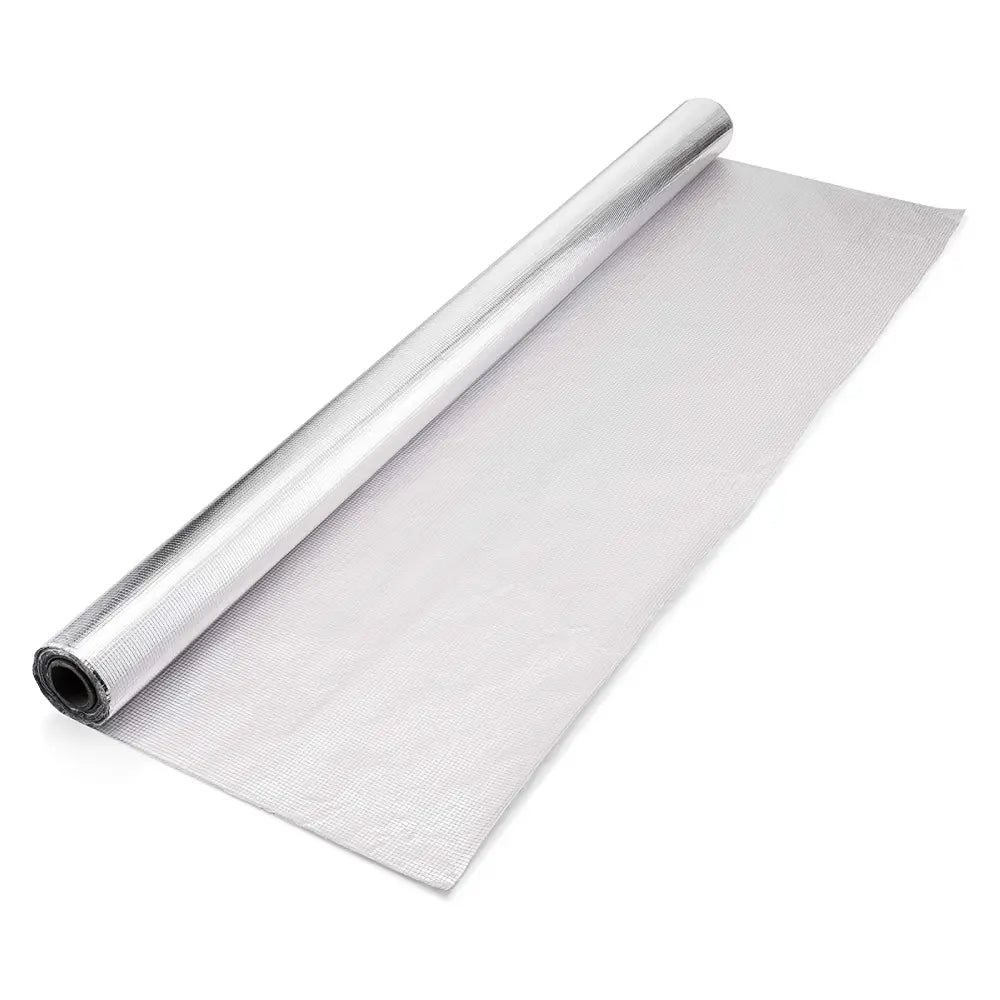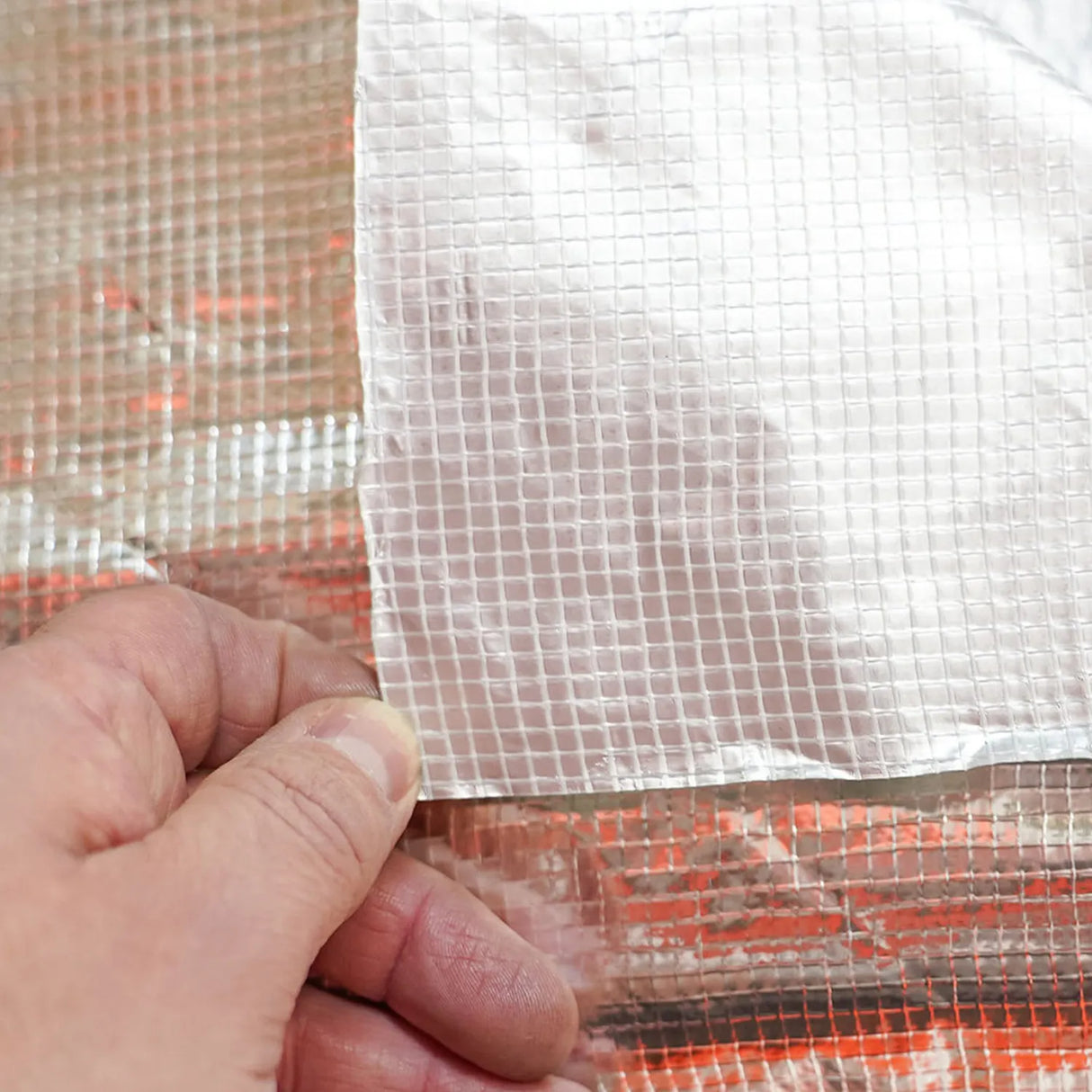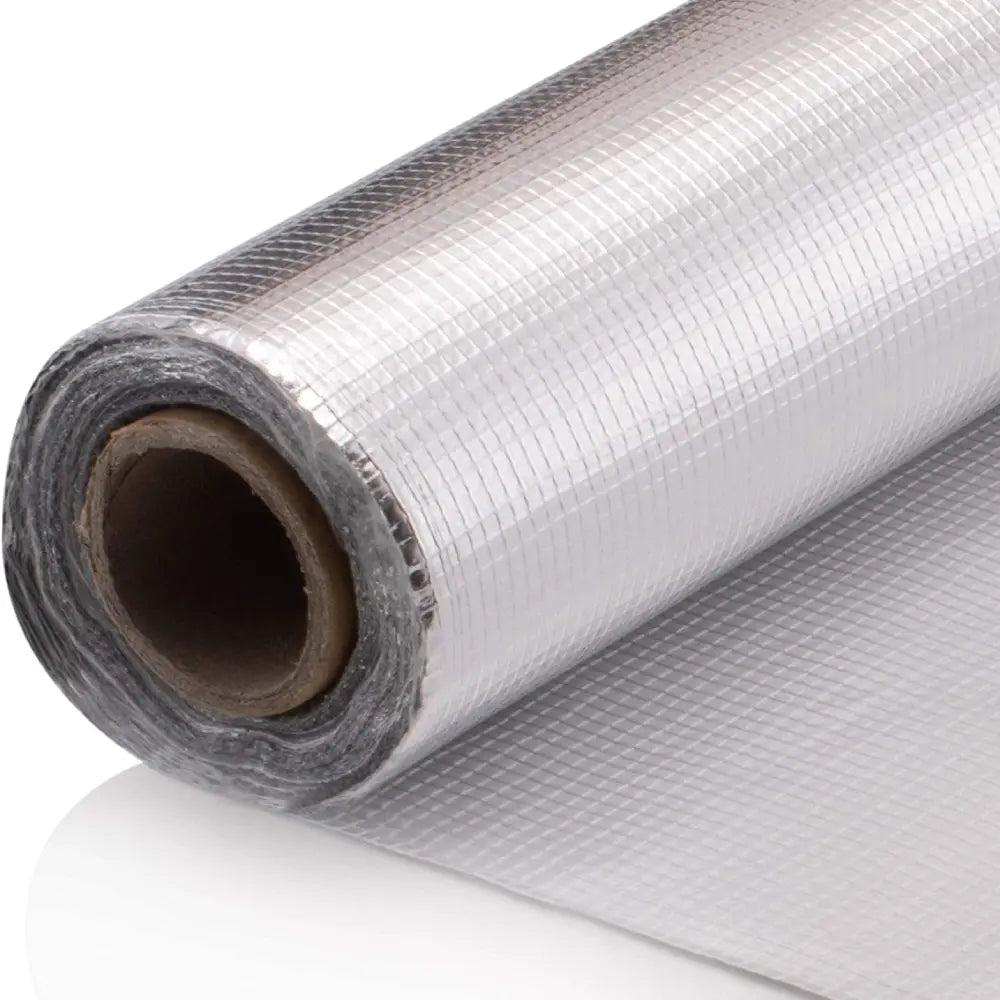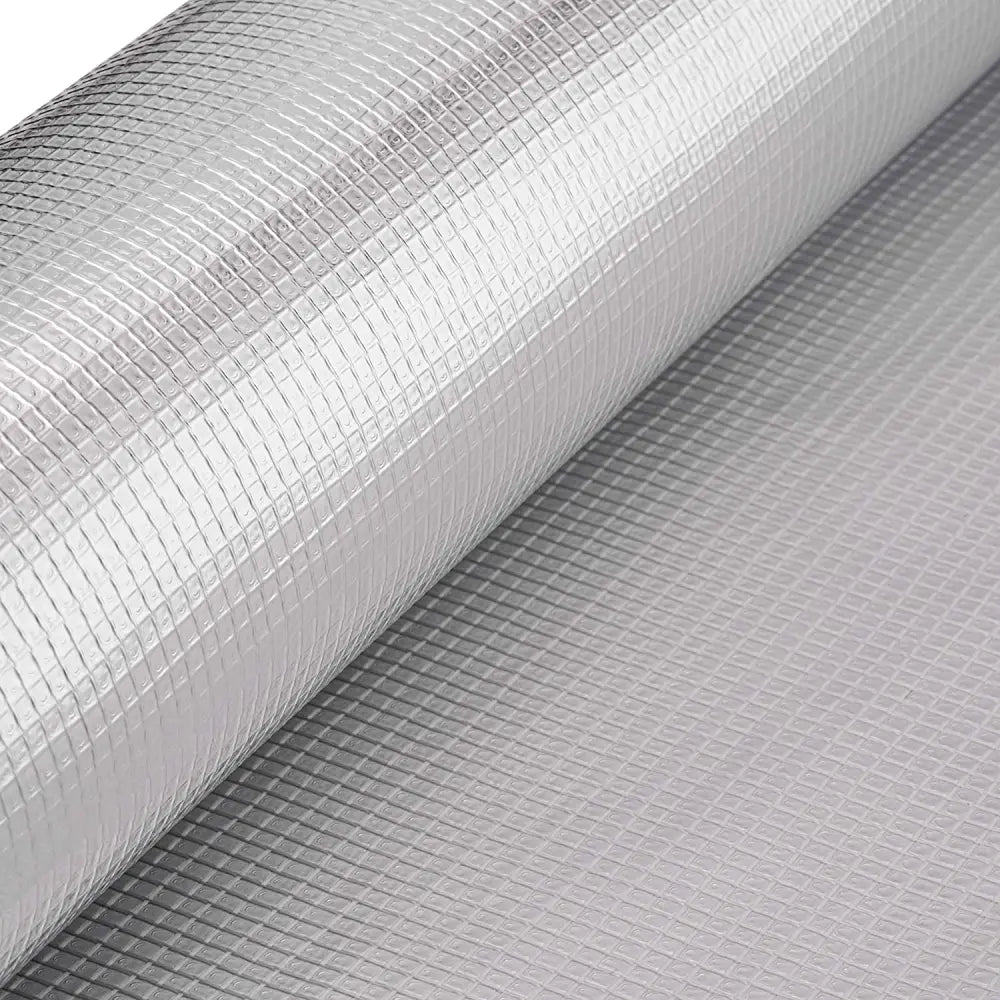SuperFOIL SFTV 1L High Tech Foil Insulation Roll - 1.2m x 20m - 24m²
SuperFOIL SFTV 1L High Tech Foil Insulation Roll - 1.2m x 20m - 24m² is backordered and will ship as soon as it is back in stock.
A 2-in-1 Vapour Control Layer (VCL) and Radiant Barrier, the SuperFOIL SFTV 1L is a Vapour Control Layer with a reflective finish one one side, that is designed to insulate heat from inside your property, as well as providing a barrier that reduces the transfer of moisture within the wall structure.
Typically used on the “warm” (interior) side in wall structures, roofs and flooring, it has one reflective side and one “dull” side, with the reflective face generally facing outwards.
- Achieves an R Value of 0.95 in Roofs, 1.42 in Walls and 2.80 in Floors
- Ideal for New Builds, Extensions and retrofits
- Simple installation with basic tools and supplies
- Functions as both a VCL and Radiant Barrier
Data Sheets & Guides:
SuperFoil Under Rafter Installation Guide
SuperFoil Over Rafter Installation Guide
-
Size
-
Coverage (m²)
-
Thickness
-
Length20m
-
Width1200mm
-
Material
-
Finish
-
Estimated Lifespan
-
Thermal Resistance
-
Water Resistance
-
Reaction to Fire
Large Order or Specific Requirement?
CALL OUR TEAM
0115 6976 800

